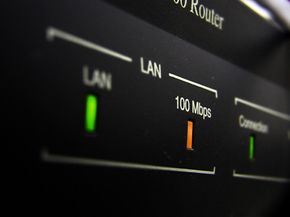Wires are for work. Wireless is for play. A few years ago, that was the conventional wisdom on wired versus wireless networks. Wi-Fi was great for checking e-mail at Starbucks, but it wasn't fast enough or secure enough for an office setting -- even a home office. For speed and security, Ethernet cables were the only way to go.
Things are changing. Now people are viewing Ethernet and Wi-Fi as important components of the same local area network (LAN). Wires are great for linking servers and desktop computers, but Wi-Fi is ideal for extending that network seamlessly into the conference room, the lunch room, and yes, even the bathroom.
Advertisement
Think about the typical college or university LAN. According to a 2007 survey, 73.7 percent of college students own a laptop [source: Educause Center for Applied Research]. And they expect to be able to access the Internet and share files across the college network, whether they're in the physics lab or sunbathing in the quad. That's the role of a hybrid network.
A hybrid network refers to any computer network that contains two or more different communications standards. In this case, the hybrid network uses both Ethernet (802.3) and Wi-Fi (802.11 a/b/g) standards. A hybrid network relies on special hybrid routers, hubs and switches to connect both wired and wireless computers and other network-enabled devices.
How do you set up a hybrid network? Are hybrid routers expensive? Is it hard to configure a Wi-Fi laptop to join an existing wired network? Read on to find out more about hybrid networks.
Advertisement


